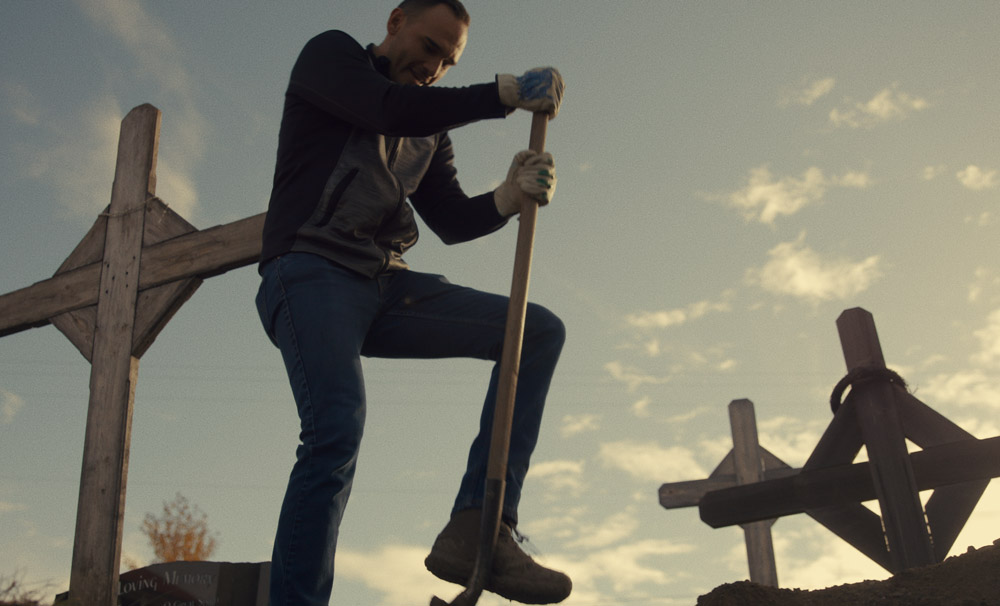“I think it’s important to go home in the moment where they’re trying to find the truth,” Julian Brave NoiseCat can be seen telling Ed Archie NoiseCat in “Sugarcane,” knowing that what he’s asking of his father won’t be easy should they make the pilgrimage to Williams Lake where Ed had been raised at St. Joseph’s Mission, a residential school run by the Catholic Church where indigenous Canadians had been sent, often after being separated from their parents against their will. While Ed left the area without plans to return to a place where he witnessed considerable cruelty, Charlene Belleau, his sister-in-law, devoted her life to the pursuit of justice in the region, helping to uncover 50 unmarked graves long suspected to have connections to the Mission and finally receiving the attention they deserve with First Nations Chief Willie Sellars in command.
However, as much as anyone might want to know the truth, it is another thing entirely to find peace as Julian Brave NoiseCat and co-director Emily Kassie vividly observe in their extraordinary film, detailing a crusade for accountability where no amount of compensation for the crimes committed would seem to be enough. Filming in Williams Lake, they show community pride in attending traditional ceremonies and rodeos, but a great deal of pain that has prevented many from coming together in a meaningful way for generations when sexual abuse at St. Joseph’s and a systematic coverup that could somehow be worse than the initial crimes has many still holding onto their trauma privately when they were made to feel ashamed and victimized. Williams Lake First Nations councillor Rick Gilbert may be invited to the Vatican for an apology from Pope Francis following the revelations about the atrocities at St. Joseph’s as cameras roll, yet Kassie and Julian Brave NoiseCat see it more difficult for survivors and their families to accept forgiveness from themselves.
Although the subject matter is unspeakably tragic, “Sugarcane” facilitates what would seem to be an impossible conversation when Kassie and Julian Brave NoiseCat are around to capture as much compassion as the capacity for true evil, with scenes such as one involving Chief Sellars having to delicately explain the recent suicide of one of his best friends to his young kids as tender as they are devastating, and the film manages to articulate vicious cycles within the indigenous community that continue to roil when abuse at St. Joseph’s has led to crippling addictions and psychological turmoil, but when it generally refuses to leave the present moment, “Sugarcane” holds the promise through its resilient protagonists to push towards a breakthrough. After premiering at Sundance earlier this year where Kassie and Brave NoiseCat won a much-deserved Directing Award in the U.S. Documentary section, the film is now making its way to theaters across North America and the directing duo graciously took the time to talk about how their collaboration was meant to be, the importance of taking their time with such a sensitive personal process and finding an intricate structure and score to handle such heaviness with grace.
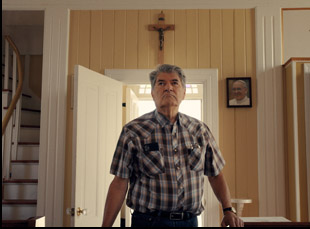
Emily Kassie: Yeah, I’m an investigative journalist and filmmaker and I’ve made films in newsrooms for over a decade. I’ve covered human rights abuses and atrocities and conflict and their aftermath all over the world, from Rwanda to Afghanistan to Niger, but I’d never turned my lens on my own country and the horrors it perpetrated against its First Peoples. When the news of unmarked graves broke in May of 2021, I felt that I needed to be part of whatever reckoning this was.
Julian and I worked our first reporting jobs together and we became fast friends [after being] randomly seated next to each other at the desks. We’ve been trying to find something to work on ever since, and if there was anyone to tell the story with, it was Julian, so I texted him and he said he would think about it and get back to me. In the meantime, I went looking for a nation that said they were going to do a search [of the unmarked graves], but hadn’t started. I found an article in the Williams Lake Tribune about Chief Willie Sellers and the Williams Lake First Nation, and I wrote him a cold e-mail that day, and he called me back that same afternoon, [saying], “The creators always had great timing. Just yesterday, our council said we need someone to document this search.” So I geared up, and I had some meetings with council, and I booked my flights to Williams Lake, and a couple weeks later, Jules called me back.
Julian Brave NoiseCat: And when I called her back and told her that I’d be willing to collaborate with her on the documentary, she told me that she’d identified a First Nation leading a search, and that that search was happening at St. Joseph’s Mission. I just about fell out of my chair, as you might imagine, and that’s when I said, “Wow, that’s really crazy. Did you know that’s the school that my family was sent to and where my father was born?” Out of 139 Indian residential schools in Canada, it was the one school that my family was taken to and where my father’s life began.
Emily Kassie: And for three years after, we built a vision together using our complementary skill sets. Julian’s an incredible writer and historian and journalist, and I come from that documentary and investigative background, so we built on the world that was in front of us and came up with “Sugarcane.” Of course, Julian became part of the story, but that’s not always what it was meant to be. We had never planned for him to be in the story.
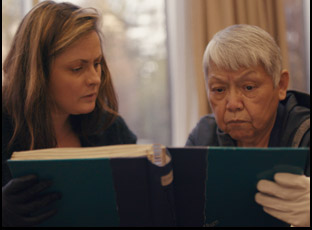
Julian Brave NoiseCat: Part of the really smart story sensibility that Em had in the very beginning was to follow an investigation, [which] gives a very clear narrative through line and opportunities for revelation throughout the story. That was really central from the very beginning, and then when she showed up in Williams Lake and was introduced to Chief Willie and to Charlene Belleau, an activist working on this for over 30 years who also happens to be my aunt, and the late Chief Rick Gilbert and there’s obviously lots of people in this world who are incredibly interesting. But from the very outset, her instincts told her that those should be our main protagonists. Then when I came and we had conversations about it, I very much agreed and the fourth to enter the fray was me eventually, and my dad and our family story.
To make the documentary, I moved back West from the East Coast [where I’d] been living for career reasons for a decade and I had the opportunity because of the documentary, and also because I had signed a book contract to dedicate myself full time to storytelling in my creative life, to move back in with my dad, who lives in Washington State. We actually lived right across the hallway from each other for the two years during the making of the documentary, and it was the first time I lived with him since I was a small child. We’d cook each other breakfast. We hung out many nights and I learned so much more about his life when we were living together. I think that really came from the fact that my dad had all of these questions about his own birth that he felt he wanted to pursue and try to find some answers and closure. I watched him make art, and ultimately he obviously collaborated in his own way in the making of our art in our film.
Emily Kassie: And each of those narratives represented something thematically to us. Julian and his dad were really about that family rebuilding the bonds and ties that were intentionally destroyed by the residential school system. Then Rick Gilbert was grappling with faith. That’s something that many people who went through the residential school system, particularly elders, still hold — this duality of their cultivating their indigenous beliefs and spirituality and Salish beliefs in this region and their Catholicism and what they took away from the missionaries in the school. And for us, Rick was this confrontation of faith. For Charlene, she was searching for accountability and for someone to answer for the crimes that had happened. And Chief Willie was really a representation of the community and its survival, looking to try to keep it alive as people continued to die from residential schools, either through addiction or suicide caused by cycles of abuse that came from the school. So those pillars of the film we found through these four characters that represented so many others were grappling with.
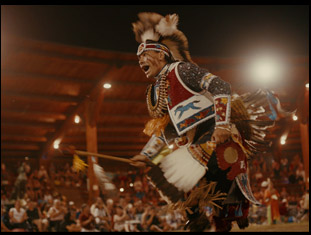
Julian Brave NoiseCat: Firstly, the past just is present in the lives of our participants in this community, particularly as they were reckoning with the investigation that revelations of potential death and lots of abuse at St. Joseph’s Mission. So part of what we were trying to portray was the way in which that genocide is still rippling out across generations. People are still grappling with the abuse and even succumbing to the death that began with St. Joseph’s Mission and the Indian residential schools. At the same time, there were certain filmmaking devices that we thought would really convey the way that that past was haunting our characters. Archival was obviously a big part of that.
We use a lot of archival from this CBC documentary called “Through the Eyes of Children” from 1962 that was at the time produced as a form of propaganda to celebrate what the Canadian government was doing to Native kids at these Indian residential schools. But in the language of our film, it enters at first as [part of] the late Chief Rick Gilbert’s memories of the school and it exists in that way throughout the film until in the end you discover that it’s this propaganda and this thing that is still haunting. It is still alive here in the present. That idea of the spirits and the presence of the kids who were taken away to the school being here now was something that we felt quite often when we were in the field.
Emily Kassie: And there was this question of what happens when the ghosts come home and what happens when people are confronted with breaking open this truth? For example with Charlene, she’s someone who has boxes and boxes of videotapes and binders and even little student cards with different children’s names on them from the schools and her time working in them, so this process had her excavating those truths out of her garage. Other people like Rick excavating them in their memories, and there are a lot of visual allusions to this. You have Chief Willie digging the grave of a family or of a community member who took his life on the first Truth and Reconciliation Day, so you’re in the ground that’s in conversation to what’s above the ground.
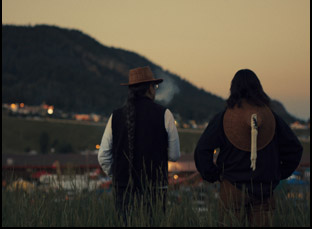
Emily Kassie: In that moment in particular, it was very interesting because this was a white man from the settlement who was brought over by the priest to dig these graves as a kind of punishment because he was an issue kid at his school and he himself became an addict and had a very traumatic life after that, haunted by this truth. And Charlene, despite it everything she’s heard, decides to shoulder that burden with him in this really generous way. That kind of bravery and leadership really inspired us to approach it in the same way, to share the burden and to create space for people and to use the camera to give people agency and to tell them that they matter. When wielded in a certain way, I think it can have a transformative power.
Julian Brave NoiseCat: Yeah, also given the time that we were able to take with this project and the way in which we initially put our own resources into it and then ultimately got enough resources to do it in a very patient way, that gave us the space to move at the pace of real human beings and real community. So we were able to follow people when they were ready to confront these truths and have these conversations in the time that was right for them. So often because of budget constraints and the way that these things have to be made on deadlines, sometimes people get pushed to do those things too fast and too soon to “get the goods,” and we were really fortunate to not have to do that in “Sugarcane.”
You can tell from the sensitivity here and there’s a beautiful score from Mali Obomsawin to accentuate the film. She’s seems like a particularly inspired choice when she hadn’t worked on a film before, but of course is connected to one of the great filmmakers. How did she come into the mix?
Julian Brave NoiseCat: It was a real joy to work with Mali,” and you’re right, her aunt Alanis Obomsawin is a legend of Indigenous and Canadian cinema and if you look up her filmography and all the films that she has made, there’s dozens across decades. [Mali’s] young, but she’s a very, very talented musician and concurrent to working with us, she actually ended up working with FX’s “Reservation Dogs” to do some scoring for that and she brought some incredibly brilliant work to this project that really helped draw out the emotionality of certain moments and the sound of this world, a world that is at once Catholic and Indigenous, that is Western, that is epic, and that is also in some moments really dissonant, [echoing] grappling with the legacy and ongoing reality of genocide. I can’t give her a higher praise. She’s just incredibly talented and she brought something really special to “Sugarcane.”
Emily Kassie: Yeah, and [on this film] we rarely used our veto cards. We really tried to be as collaborative and open as we could and move through ideas together. But one day Julian said, “Listen to this jazz album. She needs to score the film.” And Kellen [Quinn, the producer] and I listened and we were like, “This is amazing. Has she ever scored a film before?” And the answer was no.
Julian Brave NoiseCat: But like, holy shit, did she deliver. [laughs]
Emily Kassie: We gave her this direction of all the themes Julian spoke to, and she created themes for every character that built and changed over time and came together in this moment. So much of the cinematic feeling of the film comes from her music, which is at once subtle and epic. It’s really extraordinary what she’s accomplished and we feel really lucky to be the first to get to have a film scored by her.
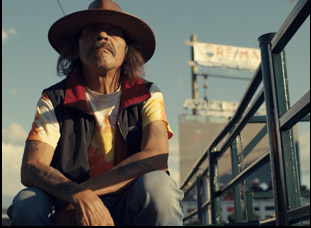
Emily Kassie: I think the way the film came together, there were so many moments throughout the process that felt there were other forces at play. It became so clear that the spirit world or the beyond or the ancestors had to be taken seriously in the context of this film. Julian had shared with me so many oral histories of the Salish peoples and what the role of the spirit world was, it was so clear that we had to be in conversation with that. And I was thinking much more in the scope of an investigation and something more journalistic and obviously emotional, but the emotional and spiritual truth of the film is something that really emerged very quickly and in a very profound way that changed the nature and DNA of “Sugarcane.”
Julian Brave NoiseCat: Certainly I didn’t enter thinking that I was going to be a participant, so the biggest thing for me was that this ultimately became a personally transformative and healing project. It’s my hope that people will see the way that this film was that for me and my family and for the other participants, and that will inspire them, particularly if they’re indigenous, to have the kind of conversations that I was able to have with my dad and that he was able to have with his mom about this history, and beyond that, to any other people who are part of families that might have similar traumatic experiences that they’ve never talked through while they still have time.
“Sugarcane” opens in theaters across the U.S. on August 16th. A full list of cities and dates is here.




